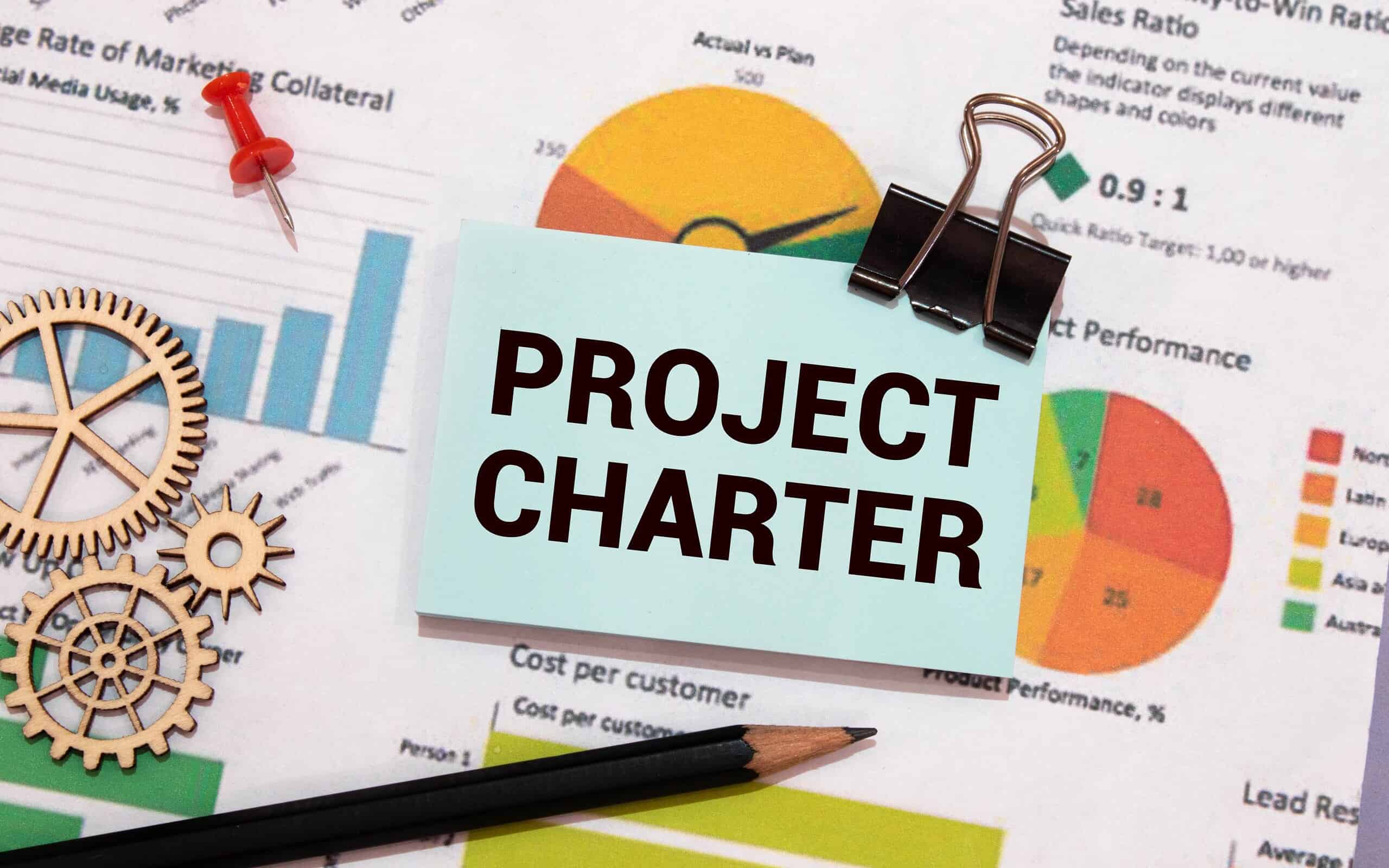
A charter is the entry point for every project that an organization undertakes. Since you will be encountering them often, let’s take you through what they are and what they contain.
Overview: What is a charter?
A charter is a document that outlines a process improvement project and is considered the first step in the Define phase of DMAIC.
5 benefits of a charter
There are some clear benefits to beginning your project with a charter:
1. Clarifies and defines the project’s objectives
A charter offers documentation of a clear purpose and direction.
2. Aligns the project’s objectives with organizational objectives
The document shows how the objectives of the project correlate with the overall objectives of the entire organization.
3. Marketing tool
A charter can serve as a marketing tool to sell the idea to higher-ups and stakeholders.
4. Authorizes the project manager to begin execution of the project
A charter serves as official documentation authorizing a project manager to begin the steps needed to accomplish the goals of the project.
5. A reference tool during personnel change
A charter can be useful if a project changes hands for new personnel to quickly get up to speed on the objectives.
Why is a charter important to understand?
You need to understand charters if you are leading the development of a project for these reasons:
Arguably the single most important document of any project
Understanding a charter is extremely important as it is the document that acknowledges the existence of a project as well as what defines its most essential elements.
Establishing intent
Knowing how to put together a charter is essential for codifying your project’s intent.
Communication
Having an understanding of charters is crucial since you will be using it to communicate the features of the project to stakeholders, higher-ups, and anyone involved in the project’s implementation.
An industry example of a charter
A new project has been proposed by a company. First and foremost, it is decided that a charter must be drafted before any movement can happen on the proposed project. In the charter, the purpose of the project is listed, as well as who the project manager will be. The document also goes over the basics of what resources will be needed as well as the goals for the project. The charter also lists the stakeholders as well as the risks involved. The document is kept to one page and is distributed internally within the company.
3 best practices when thinking about charters
Here are some practices to keep in mind when putting together a charter:
1. Distinguish the charter from the project management plan
The charter is a high-level overview, while the project management plan is used by the project manager and goes into much greater detail about tasks, timeline, and resources.
2. Template
Save time and energy with your charter by utilizing one of the many ready-made templates available.
3. Keep it brief
One of the key features of a project charter is its succinctness. Keep it to one to two pages maximum.
Frequently Asked Questions (FAQ) about charters
What is the difference between a statement of work and a project charter?
A statement of work, or SOW, is typically an external document between the client and those carrying out the work. A charter is an internal document for those carrying out a project within the organization.
Who writes the project charter?
It is most likely to be the project sponsor or to be delegated to the project manager.
What does a project charter include?
What exactly is included in a charter can vary, but there are some key characteristics in every charter:
- Announcing the existence of the project and its manager
- Authorization of the project manager to begin on the project and the gathering of resources
- Project goals and objectives
- Recognizing the key stakeholders
- Identifying any risks and restraints
Beginning your project with a charter
When beginning a project at your organization, the first step is going to be the creation of a charter. Having the foundational understanding of how to draft one is an important step in being able to lead the development of any project, whether it is big or small.